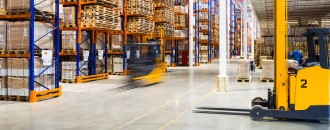
GST to ease foreign trade, but working capital cost may rise
The Dollar Business Bureau
Union Finance Minister Arun Jaitley-led GST Council on Thursday announced a four-tier rate structure, considered to be the biggest tax reform after the economic liberalisation of 1991, effective from 2017. The bands of tax rates that have been narrowed down are 5%, 12%, 18% and 28%. Apart from this another category that has been termed as sin tax of 40- 65% is likely to be imposed on luxury goods like pan masala, high-end cars, tobacco products and aerated drinks. Exporters and importers consider the GST slabs as a mixed bag as it would ease documentation and multiple tax payments in different states, while increasing working capital cost.
Jaitley said: "If we have to raise this by way of tax, we will need Rs 1,72,000 crore. However, the cess to be applicable on luxury cars, tobacco, aerated drinks, etc, is not an additional levy, but an existing one and there will not be an additional burden of even a rupee. Several items being used increasingly by the lower middle class are likely to be transferred to the 18 per cent rate. The higher tax rate of 28 per cent will help the Centre offset losses in the other three tax brackets.”
Once Parliament approves GST slabs, the new indirect tax structure will subsume various taxes including excise, services tax, octroi and other levies and the proceeds will be shared between the Centre and states. Parliament’s winter session is scheduled from November 19.
Let’s take a look at likely impact of GST on different segments. “
Foreign Trade
Exporters and importers are awaiting more details as to ascertain the likely impact of GST on different segments of foreign trade. Those who engaged in exporting products that fall under zero or 5% slabs will benefit from the new GST regime. The government says the new GST structure will increase tax compliance and confidence of investors, thus reducing litigations as well. Exporters with products under zero rate slab will enjoy tax free exports.
However, Assocham has cautioned that the higher tax rate may increase working capital cost as initial landed price of purchase will soar significantly. Assocham further said that the cost of procurement of services may increase to more than 18% from the current 15%, which will be a challenge for the industry, especially if CENVAT credit on passive infrastructure and fuel consumption is continued to be denied to the industry.
Coming to the ‘inverted duty structure,’ GST is expected to remove such distortions. Generally, imported raw materials face higher tax than imported finished products and this makes exported goods costlier. GST is expected to reduce trade cost as it may reduce intermediate cost involved in paying multiple taxes and documentation.
GST being destination based tax, less number of document/paper work required at intermediate level, it will reduce red-tapism, corruption, etc, and will increase the rating of India in ease of doing business in global market. As a result, India will attract more foreign direct investment (FDI) into the economy.
Food grains
The GST Council has exempted food grains from tax slabs. Hence, food grains will be zero-rated to insulate people from inflationary pressures. About 50 per cent of the consumer inflation index would attract zero tax under GST. The food processing industry is taxed at a lower rate or zero rate. GST is likely to be based on minimal exemptions regime, leading to increase in the tax cost for the food processing industry and inflation.
White goods
White goods segment attracts 28 percent GST under the newly proposed slabs. Washing machines, air conditioners, refrigerators, shampoo, shaving stuff and soaps will be taxed at 28 percent. Of course, there’re some riders on this slab as the GST Council considered different income groups.


-Vertical.jpg)


